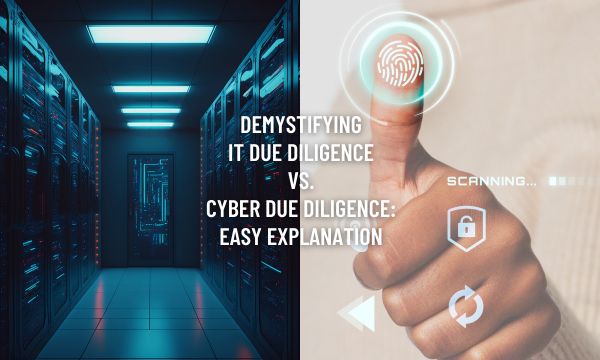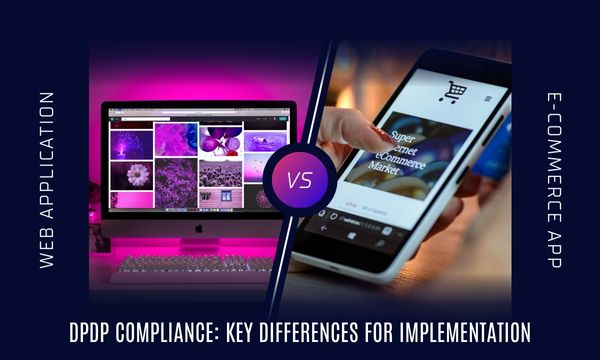
In the digital realm where every byte of data holds immense value, the concept of due diligence emerges as the sentinel guarding the gates of technological fortresses. As stewards of information security, it's crucial to discern the nuances between IT due diligence and cybersecurity due diligence, for within these distinctions lie the keys to resilience and preparedness.
In the labyrinth of digital landscapes, due diligence stands as the bastion against unforeseen risks and vulnerabilities. It's akin to a vigilant watchman meticulously inspecting the ramparts, ensuring that every chink in the armour is fortified. But within the realm of IT and cybersecurity, due diligence takes on different shades, each tailored to address specific facets of technological fortification.
Understanding the Essence: IT Due Diligence
At its nucleus, IT due diligence constitutes a comprehensive audit and evaluation of an organization's IT infrastructure, systems, and processes. This meticulous scrutiny is often invoked during pivotal junctures such as mergers, acquisitions, or significant technological transitions. The primary objective here is to assess the operational efficiency, scalability, and potential risks inherent within the existing IT ecosystem.
Deciphering Cyber Due Diligence
Conversely, cyber due diligence ventures deeper into the labyrinth, focusing specifically on the cybersecurity posture of an organization. It entails a thorough examination of security protocols, threat mitigation strategies, and incident response frameworks. The crux of cyber due diligence lies in identifying vulnerabilities, safeguarding sensitive data, and fortifying defences against the relentless onslaught of cyber threats.
Distinctive Attributes: Scope, Objectives, and Focus Areas
-
Scope:
-
IT Due Diligence: Encompasses a broad spectrum of IT infrastructure, including hardware, software, networks, and operational procedures.
-
Cybersecurity Due Diligence: Zooms in on the intricacies of cybersecurity measures, scrutinizing aspects such as access controls, encryption protocols, and vulnerability management systems.
-
-
Objectives:
-
IT Due Diligence: Seeks to evaluate the operational efficiency, scalability, and risk exposure of the IT environment.
-
Cybersecurity Due Diligence: Aims to assess the efficacy of cybersecurity defences, identify vulnerabilities, and mitigate potential cyber threats.
-
-
Focus Areas:
-
IT Due Diligence: Emphasizes IT infrastructure, system architecture, and operational workflows.
-
Cybersecurity Due Diligence: Prioritizes cybersecurity protocols, threat intelligence mechanisms, and incident response capabilities.
-
-
Risk Assessment:
-
IT Due Diligence: Assesses risks related to operational efficiency, scalability, technological compatibility, and potential disruptions to business operations.
-
Cybersecurity Due Diligence: Identifies cybersecurity risks including data breaches, unauthorized access, malware infections, ransomware attacks, and regulatory non-compliance.
-
-
Compliance and Regulatory Considerations:
-
IT Due Diligence: This may involve assessing compliance with industry standards and best practices but typically does not delve deeply into regulatory compliance unless it directly affects IT operations.
-
Cybersecurity Due Diligence: Places significant emphasis on compliance with relevant regulations such as GDPR, HIPAA, PCI DSS, or industry-specific cybersecurity frameworks. It involves evaluating whether the organization's cybersecurity measures align with regulatory requirements and standards.
-
-
Depth of Technical Analysis:
-
IT Due Diligence: Often involves high-level assessments of IT systems and infrastructure, focusing on functionality, scalability, and compatibility.
-
Cybersecurity Due Diligence: Requires a deeper technical analysis of security controls, vulnerabilities, threat landscapes, and incident response capabilities, often involving penetration testing, vulnerability scanning, and security assessments.
-
-
Integration with Business Strategy:
-
IT Due Diligence: Aligns IT capabilities with broader business objectives, ensuring that technology supports organizational goals and strategies.
-
Cybersecurity Due Diligence: Integrates cybersecurity measures into the overall risk management strategy, ensuring that security considerations are aligned with business objectives and that cybersecurity investments contribute to organizational resilience.
-
When Are They Required Most?
IT due diligence is often invoked during mergers, acquisitions, or major technological transitions, ensuring that the integration process is seamless and risk-free. On the other hand, cybersecurity due diligence becomes paramount when organizations are navigating through data breaches, compliance audits, or contemplating significant investments in cybersecurity enhancements.
Let's illustrate the difference between IT due diligence and cybersecurity due diligence with an example:
Scenario: Company A is Acquiring Company B
IT Due Diligence: During the acquisition process, Company A engages in IT due diligence to assess the technological infrastructure of Company B. This entails a thorough examination of Company B's IT systems, hardware, software, networks, and operational procedures. The IT due diligence team evaluates the scalability and compatibility of Company B's IT environment with their own, identifying any potential integration challenges or risks. For instance, they may analyze the compatibility of software systems, assess the condition of hardware assets, and review network architecture.
Cybersecurity Due Diligence: In parallel, Company A conducts cybersecurity due diligence to scrutinize Company B's cybersecurity posture. This involves assessing the effectiveness of Company B's security protocols, including access controls, encryption mechanisms, intrusion detection systems, and incident response plans. The cybersecurity due diligence team examines how Company B safeguards sensitive data, mitigates cyber threats, and complies with regulatory requirements. For example, they may investigate past security incidents, review penetration testing results, and assess employee awareness training programs.
Key Difference: While IT due diligence focuses on the broader IT infrastructure and operational aspects, cybersecurity due diligence zooms in specifically on security measures and defences. IT due diligence assesses the overall health and functionality of the IT ecosystem, whereas cybersecurity due diligence evaluates the resilience and effectiveness of security controls against cyber threats.
In the context of the acquisition, IT due diligence ensures the seamless integration of technological assets, while cybersecurity due diligence safeguards Company A against potential cyber risks and vulnerabilities inherited from Company B. By conducting both forms of due diligence, Company A can make informed decisions regarding the acquisition, mitigate risks, and ensure the security and continuity of operations post-acquisition.
Conclusion: Safeguarding Tomorrow's Frontiers Today
In the ever-shifting sands of digital transformation, the distinction between IT due diligence and cybersecurity due diligence serves as a compass guiding organizations towards resilience and preparedness. By understanding their unique roles and objectives, organizations can navigate through the complexities of technological landscapes with confidence, fortifying their digital fortresses against the relentless tides of cyber threats. As custodians of information security, let us heed the clarion call of due diligence, for therein lies the path to safeguarding tomorrow's frontiers today. For more details on cyber security due diligence Know more.



